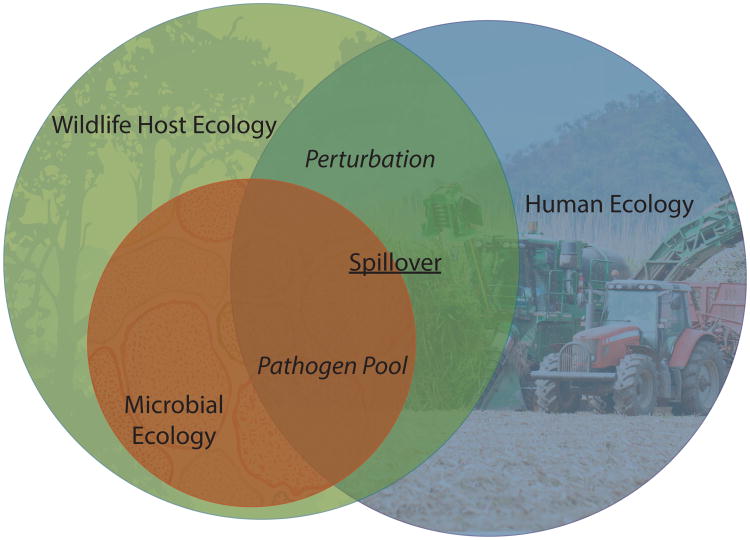Figure 1.
Conceptual model of how land use change drives the emergence of infectious diseases in people. Land use change is a complex, dynamic process that underpins many of the novel zoonoses identified in humans during the last few decades. While the ultimate goal of public health is to identify and prevent transmission of these pathogens to people (‘spillover’), our mechanistic understanding of what drives them to emerge is poor. We propose two hypotheses which are probably not mutually exclusive. In the ‘pathogen pool’ hypothesis, anthropogenic activities in previously pristine environments bring people into contact with a large reservoir of microbial diversity in wildlife for which humans are naïve. In the ‘perturbation’ hypothesis, land use changes alter the dynamics of pathogen transmission among wildlife, and promote cross-species transmission.

